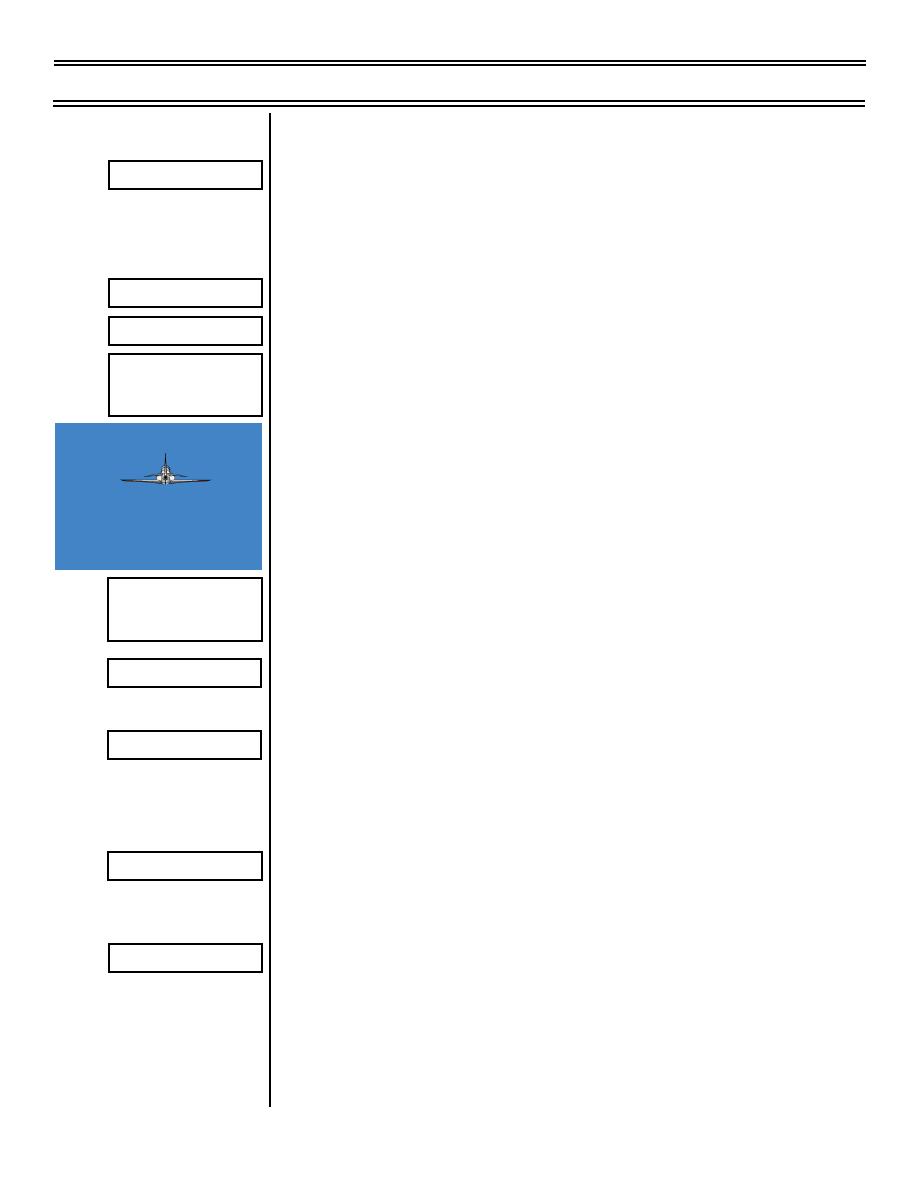 |
|||
|
|
|||
|
|
|||
| ||||||||||
|
|  Slow-Speed Flight, Stall and Spin, and AOA System
T-45A/C TS, E2-C2, ADV & IUT Aero-03
(b) Once the plane has achieved
Overlays 2-3
approximately 60 degrees left AOB
and full AFT elevator, abruptly position
the flight controls to full right aileron
while maintaining aft elevator
Overlay 4
(2) Result:
Overlays 5-9
(a) The aircraft will initially roll right, and
then the upgoing (left) wing will
Sg 2, fr 17
achieve such a high AOA that it will
Adverse Yaw Departure
stall
(b) A snap roll to the left is initially the
result, followed by random post-stall
gyrations and then, finally, an
extremely nose-low dive recovery
b.
Cross-controlled departure*
Sg 2, fr 18
(1) Entry example:
Fig 8: Cross-controlled
Departure (8 overlays)
(a) Simultaneously displace the aileron to
the full left position while pushing the
Overlay 1
rudder to the full right position
(b) Reduce power until AOA rises and stall
Overlays 2-3
occurs
(2) Result:
(a) The aircraft will maintain its left-wing-
down (LWD) attitude while the AOA
Overlay 4
increases and, finally, stall occurs over
the right (trailing) wing
(b) When the aircraft departs, it will snap
Overlays 5-8
roll to the right ( in the direction of the
rudder), followed by random post-stall
gyrations and then, finally, an
extremely nose-low dive recovery
(9-99) Original
Page 3-14
|
|
Privacy Statement - Press Release - Copyright Information. - Contact Us |